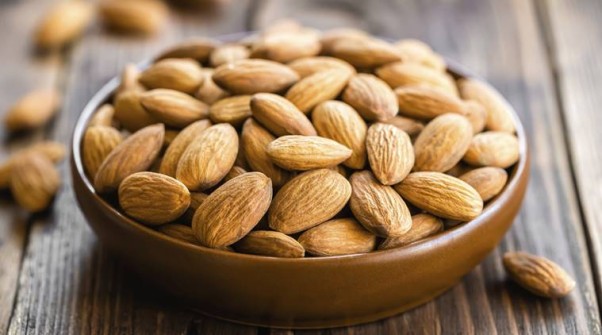A Handful of Almonds Daily Boosts Diet
Eating a moderate amount of almonds daily from childhood can drastically improve health later in life, a University of Florida study has found.

A new study found that a handfull of almonds or almond butter daily can boost your Healthy Eating Index. (Photo: iStockPhoto)
“Almonds are a good source of plant protein — essential fatty acids, vitamin E and magnesium,” said Alyssa Burns, a doctoral student and one of the UF researchers.
Researchers studied the effect that the addition of almonds can have on a person’s diet quality, based on data collected from 28 parent-child pairs. Most of the adults were mothers with an average age of 35, while their children were between 3- and 6-years-old. The parents ate 1.5 ounces of whole almonds each day during the three-week intervention portion of the study, and the children ate half an ounce of whole almonds or almond butter each day. Although only one parent and one child’s habits were analyzed in the study, which was published in the Journal of Nutrition Research, researchers encouraged the whole family to participate and provided enough almonds and almond butter for everyone in the family.
At the beginning of the 14-week research, the research subjects’ average Healthy Eating Index (HEI) scores were 53.7 for the parents and children. The HEI is a measure of diet quality that assesses conformance to the U.S. Department of Agriculture’s 2010 Dietary Guidelines for Americans. A score below 51 is reflective of a poor diet, a score between 51-80 reflects a need for improvement and a score greater than 80 indicates a good diet.
After eating the almonds, the average HEI scores for parents and children increased to 61.4. They increased their HEI component scores for total protein foods, seafood, plant proteins and fatty acids, while they ate fewer empty calories.
For all components, a higher score indicates higher diet quality. When parents and children ate almonds, their HEI score increased from 53.7 to 61.4. Parents and children consumed more vitamin E and magnesium when eating almonds, Burns noted.

Researchers believe participants replaced salty and processed snacks with the almonds. (Photo: Thinkstock)
The researchers believe the parents and children were replacing salty and processed snacks with almonds, Burns said.
Over the past 20 years, per-capita consumption of nuts and seeds has decreased in children 3-6 years old, while the consumption of savory snacks, such as chips and pretzels, increased. Researchers were interested in studying the addition of almonds into 3- to 6-year-old children’s diets, because encouraging healthy eating habits during early childhood can have numerous lifelong benefits.
“The habits you have when you are younger are carried into adulthood, so if a parent is able to incorporate almonds or different healthy snacks into a child’s diet, it’s more likely that the child will choose those snacks later on in life,” Burns said.
They were also interested in learning how easy or difficult it is to incorporate almonds into the diets of preschool children, an age when food preferences are developed.
“Some of the challenges that we saw were that the kids were getting bored with the almonds, or they didn’t like the taste of the almonds or the almond butter,” Burns said. To counter that, she said they came up with creative ways for the parents to incorporate the almonds into their children’s diets. For instance, adding them to familiar foods like oatmeal, smoothies or sandwiches.
The study’s results suggest whole food approaches, like adding almonds to one’s diet, may be an achievable way to improve overall public health.
“Adding a variety of fruits, vegetables and nuts to your diet can improve your overall diet quality,” Burns said.
Article by the University of Florida

Editor-in-Chief Mark Heckathorn is a journalist, movie buff and foodie. He oversees DC on Heels editorial operations as well as strategic planning and staff development. Reach him with story ideas or suggestions at dcoheditor (at) gmail (dot) com.



